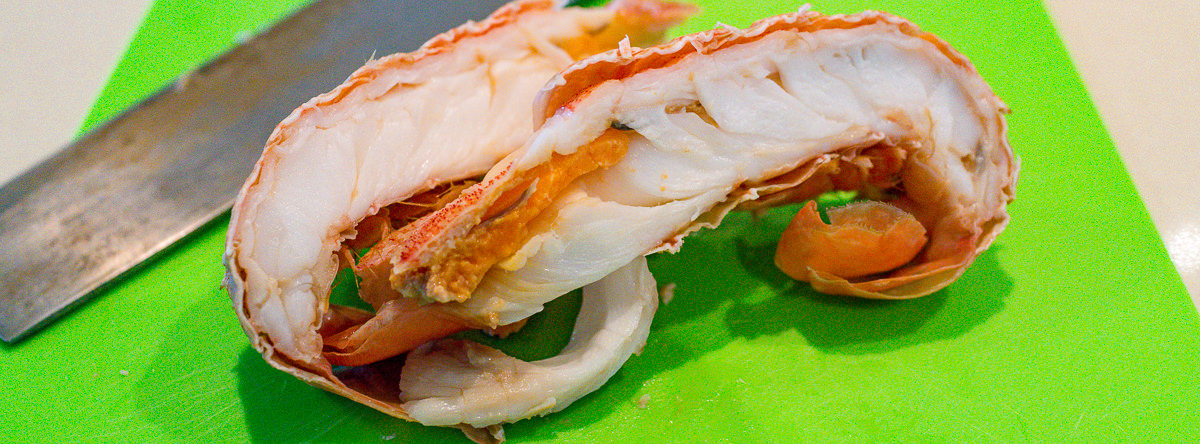Hello readers,
I hope you’ve enjoyed your week. This week’s post is quick and easy because I don’t have much time.
Recipe
Equipment
- Water heater circulator
- Water bath
- Wok
Ingredients
- Chicken thigh
- Red onion
- Shallot
- Ginger
- Shiitake mushrooms [1, 2]
- Laksa paste [3]
- Coconut milk
- Chillies
- Carrot
- Fennel
- Hokkien noodles
Instructions
Chicken thigh
- Seal a chicken thigh with the skin attached and seasoned with salt in a plastic bag.
- Heat a water bath to 76 °C and then cook the chicken in the water for 2 hours.
- Refrigerate the chicken after it has cooked.
- Pull the meat from the bones and break up the muscle bundles. Place the pulled chicken thigh aside in a bowl and gnaw the bones to avoid wasting meat.
- Place the cooking liquor into a small saucepan.
Mushrooms
- Remove the mushrooms from the packaging and place them into a bowl.
- Add a cup of water to the small saucepan with the cooking liquor from the chicken.
- Boil the contents of the saucepan and then turn off the heat.
- Pour the liquid over the mushrooms and let the mushrooms steep for about half an hour.
- Remove the mushrooms and set them aside.
Noodles
- Remove the noodles from the packaging and place them into a bowl.
- Boil the saucepan with the mushroom and chicken juices and pour over the noodles.
- With wooden tongs or chopsticks, break up the noodles and drain them when they feel soft.
- Keep the cooking liquor aside.
Soup
- Finely chop a shallot and red onion.
- Mince some ginger.
- Slice a chilli.
- Slice the fennel.
- Julienne the carrot.
- Slice the spring onion.
- Shake the tin of coconut cream and open it.
- Heat the wok and then add some oil.
- Sauté the onions, shallot, and ginger.
- Add a tablespoon of laksa paste (more or less depending on how you like it).
- Add the mushrooms and slowly add the cooking liquor used for the noodles, mushrooms, and chicken.
- Allow the liquid to reduce a little to concentrate the flavours.
- Toss in the chicken meat and stir it around.
- Pour in the coconut cream and turn down the heat.
- Bring the cream to a gentle simmer, and then add in the carrot and some of the firmer slices of spring onion.
- Add the noodles and mix everything with a pair of chopsticks or wooden tongs.
- Turn the heat off and mix through chilli and more spring onions.
- Transfer everything to a bowl and garnish with the remaining spring onions.
- Give thanks to the Lord.
- Eat with chopsticks and a spoon.
Thoughts on the meal
This meal was enough for two people, so I refrigerated half of it, and the next day I heated the remaining soup in a saucepan and served it the same way I had the night before.
I didn’t want to label this meal anything other than chicken and Hokkien noodles. You could make this with any sort of Asian style flavouring you have around. I know many people would add garlic. I didn’t have any, and I’m not fussed about garlic in my food. If I have garlic, I’ll use it, but it’s not a big deal to omit it.
I know that I use some techniques not readily available to everyone. You can substitute different approaches.
For example, you could cook the chicken any way you like so long as you achieve the correct temperature and duration[4]. Not everyone will get sick with inadequately cooked food. However, I commonly see reports of incapacitated people because of poor attention to food safety. You could use a supermarket rotisserie chicken if time is short and your budget permits. Break down the chicken, store it safely, and use it how you want.
I like the idea of using dried foods like mushrooms. I can use a few from a packet in this soup and the rest in other meals. The steeping liquor is also suitable for flavouring other aspects of the cooking process.
Feel free to make modifications and share them.
On food safety, I now have the pleasure of working with someone on a committee I have admired for decades. When I was in my final year of speciality training, this colleague wrote a magnificent review article on the pathogenic forms of Escherichia coli. I read it and memorised it; it was so good. One of my final exam questions was to compare and contrast the pathogenic forms of Escherichia coli. This colleague is now retired but working in an emeritus capacity.
Final thoughts
- How has your week been?
- Do you like using dried foods?
Photographs




References
- 1. Kim, S.H., et al., Ecofriendly shiitake authentication using bulk and amino acid-specific stable isotope models. Food Chem, 2022. 397: p. 133819.
- 2. Berger, R.G., et al., Mycelium vs. Fruiting Bodies of Edible Fungi-A Comparison of Metabolites.Microorganisms, 2022. 10(7).
- 3. Peng, Z.F., et al., Antioxidant flavonoids from leaves of Polygonum hydropiper L.Phytochemistry, 2003. 62(2): p. 219-28.
- 4. Yang, R., et al., Thermal death kinetics of Salmonella Enteritidis PT30 in peanut butter as influenced by water activity. Food Res Int, 2022. 157: p. 111288.























